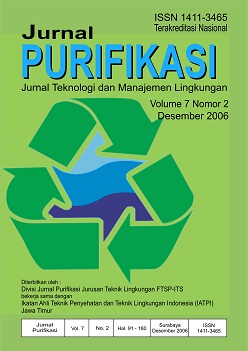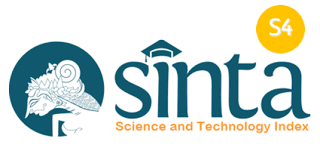FAKTOR-FAKTOR YANG BERPENGARUH TERHADAP KADAR TIMBAL DALAM DARAH ANAK-ANAK SEKOLAH DI BANDUNG
Main Article Content
Abstract
The Blood Lead Level (BLL) test was conducted in Bandung during periods of August-December 2005. Four hundreds school children of 40 elementary schools from 25 Districts in Bandung were selected in this study. The cluster system was used to define number of schools, school locations and number of samples in Bandung. US EPA reference method using lead care analysis was used to analyze BLL level in the school children’s blood. The results from this study showed that school children had geometric average BLL value of 14,13 µg/dL (median value = 12,5 µg/dL, range of average were 13,38-14,89). Out of 400 children, 65,5 % of children had BLL above 10 µg/dL (WHO standard for children). The highest average value (17,0 µg/dL) was found from a group of 11 year old children. While the second highest average value was 14,75 µg/dL found from a group of 10 year old children. The group of 7 years old children had an average value of 12,19 µg/dL. Demographical faktors such as the house location, travel times, parent occupation as well as the poverty to be significantly influence the BLL for children.
Downloads
Article Details
Submission of a manuscript to Jurnal Purifikasi means that the work has never been published in another journal and is not under consideration for publication elsewhere. The author hereby agrees to submit the copyright of the manuscript and its contents to Jurnal Purifikasi, if accepted for publication. Accepted manuscripts will be published in printed form where the ISSN is bound in printed form, not in online form (pdf). Authors are not allowed to publish their work in other forms (journals) without permission from the Jurnal Purifikasi manager.
By submitting a manuscript, the author is deemed to know all the rights and obligations attached to each manuscript.








